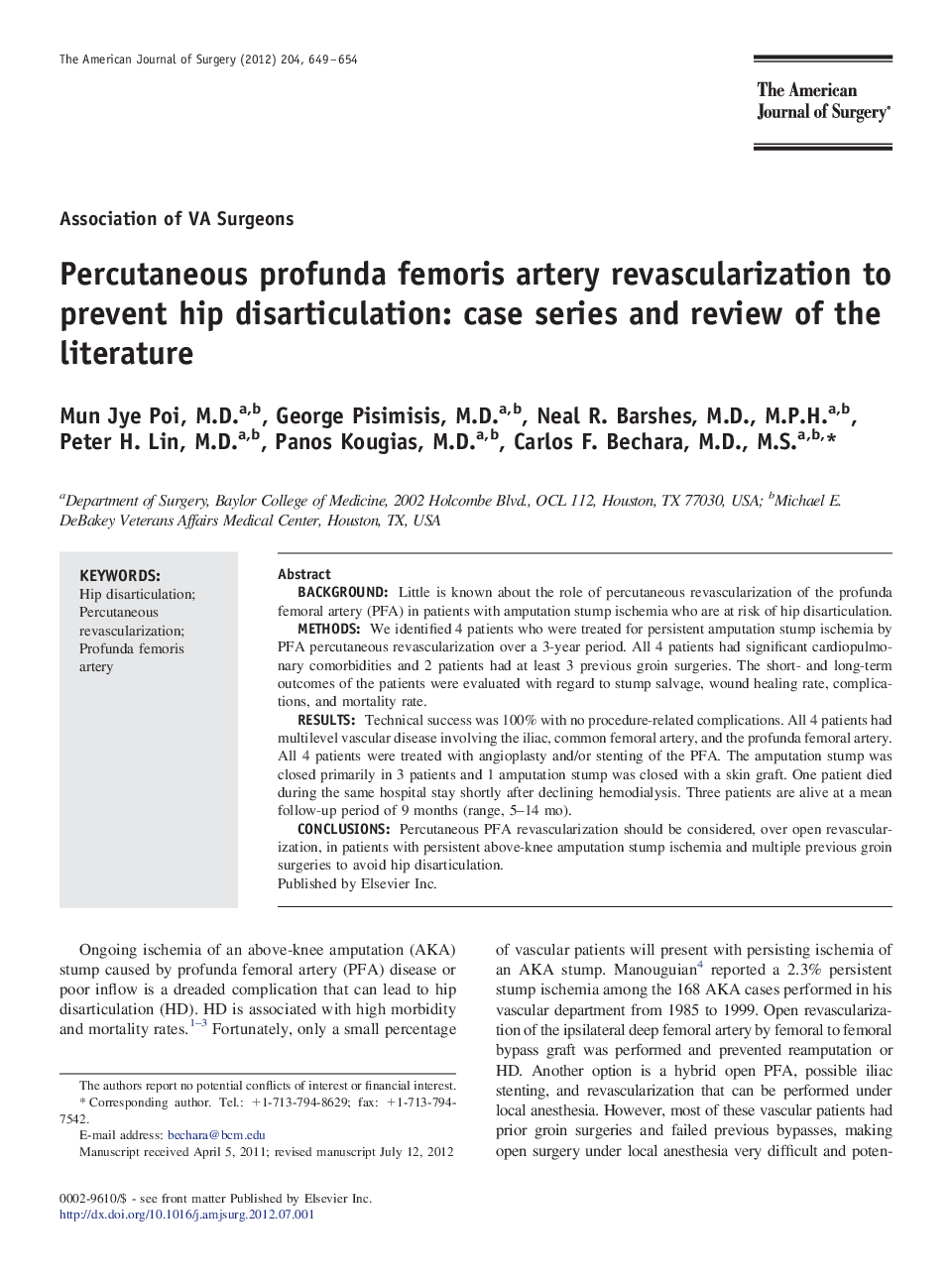| Article ID | Journal | Published Year | Pages | File Type |
|---|---|---|---|---|
| 4279676 | The American Journal of Surgery | 2012 | 6 Pages |
BackgroundLittle is known about the role of percutaneous revascularization of the profunda femoral artery (PFA) in patients with amputation stump ischemia who are at risk of hip disarticulation.MethodsWe identified 4 patients who were treated for persistent amputation stump ischemia by PFA percutaneous revascularization over a 3-year period. All 4 patients had significant cardiopulmonary comorbidities and 2 patients had at least 3 previous groin surgeries. The short- and long-term outcomes of the patients were evaluated with regard to stump salvage, wound healing rate, complications, and mortality rate.ResultsTechnical success was 100% with no procedure-related complications. All 4 patients had multilevel vascular disease involving the iliac, common femoral artery, and the profunda femoral artery. All 4 patients were treated with angioplasty and/or stenting of the PFA. The amputation stump was closed primarily in 3 patients and 1 amputation stump was closed with a skin graft. One patient died during the same hospital stay shortly after declining hemodialysis. Three patients are alive at a mean follow-up period of 9 months (range, 5–14 mo).ConclusionsPercutaneous PFA revascularization should be considered, over open revascularization, in patients with persistent above-knee amputation stump ischemia and multiple previous groin surgeries to avoid hip disarticulation.
